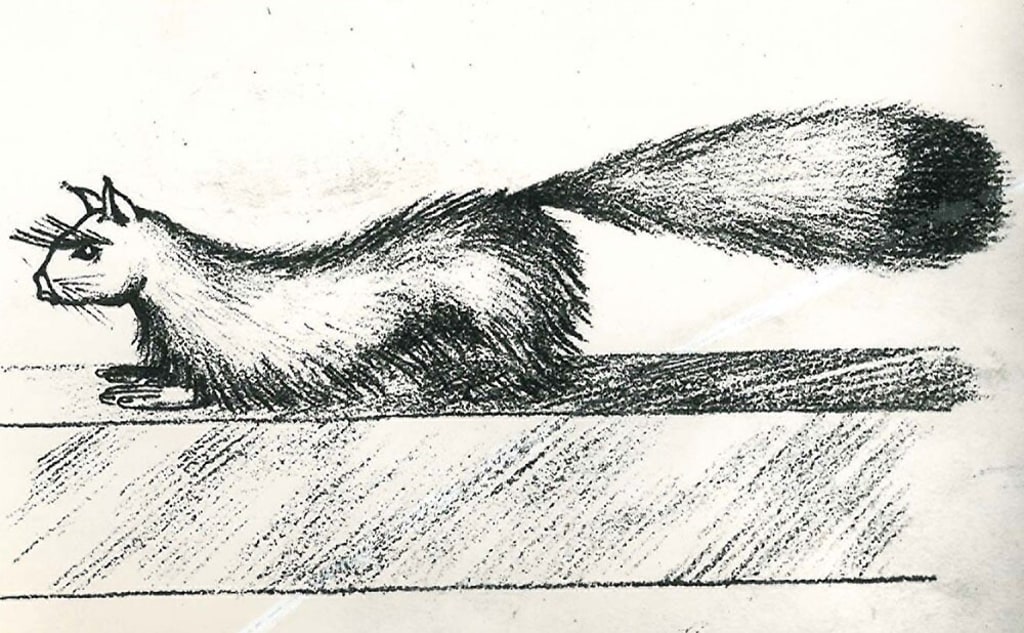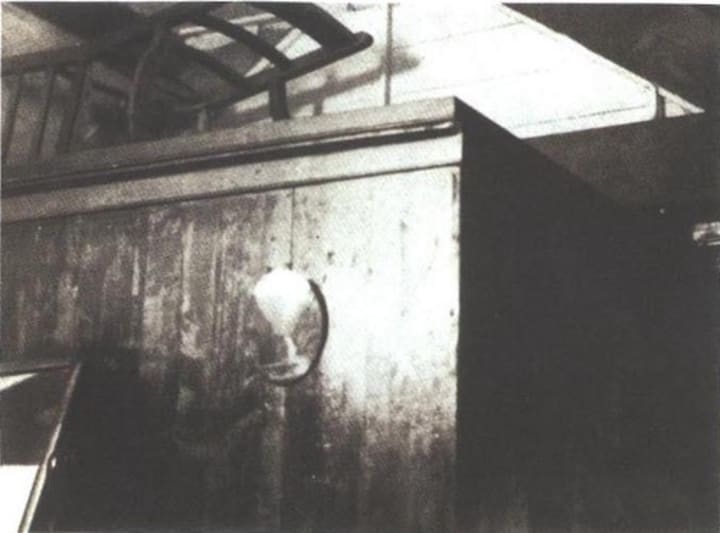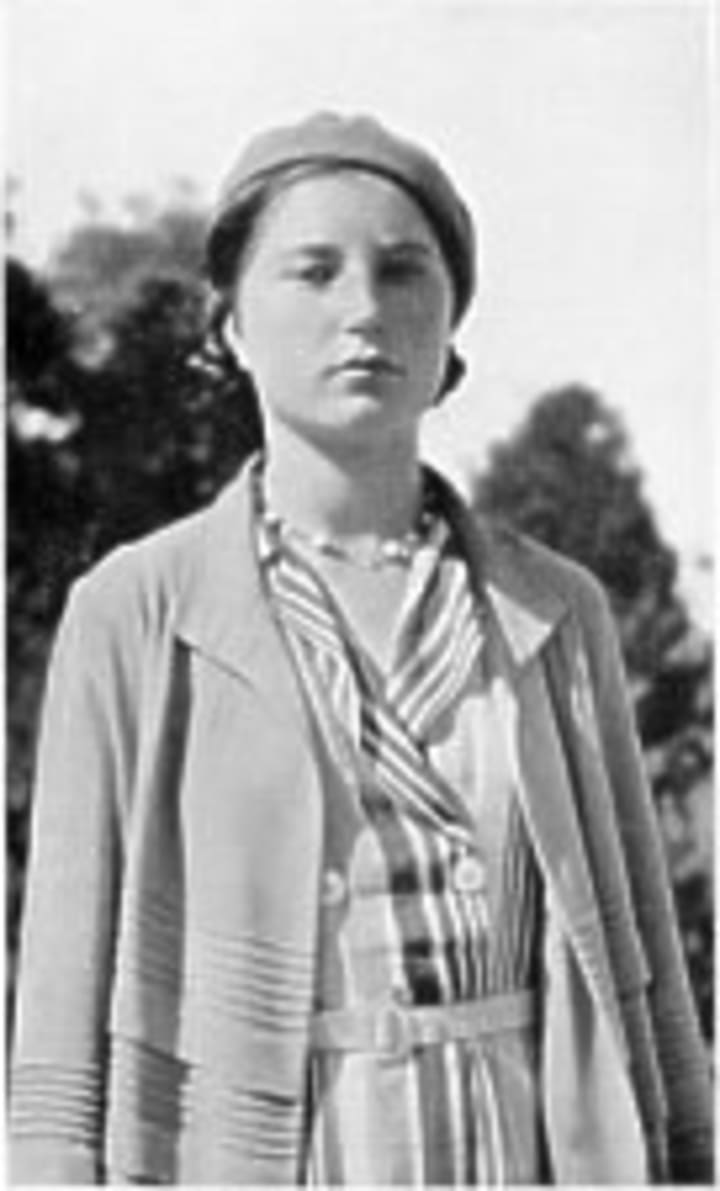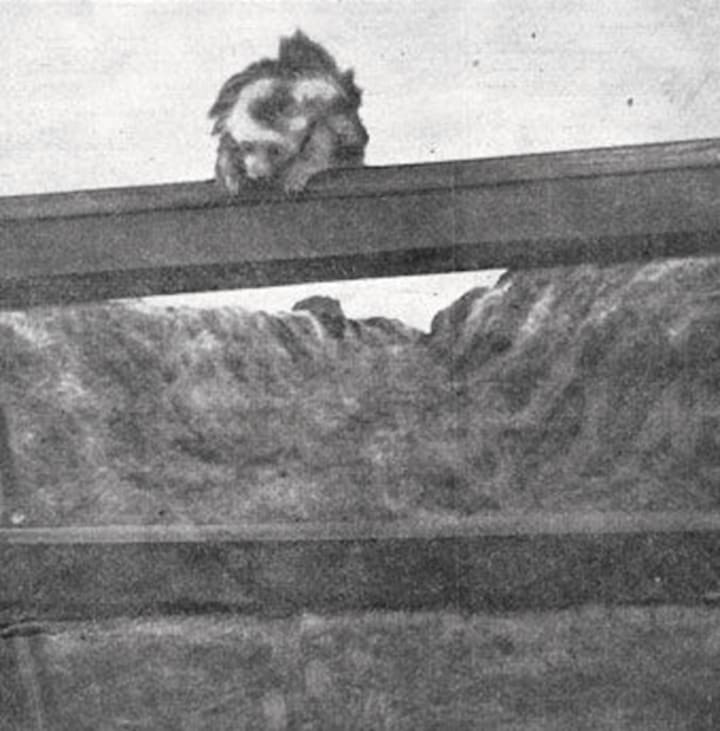The Bizarre Case of Gef, The Talking Mongoose
Whether a talking mongoose, a poltergeist, or an elaborate hoax, Gef the mysterious “Dalby Spook” is one of the most fascinating characters in UK folklore.

In the Autumn of 1931 the Irving family, residents of a farmhouse at Doarlish Cashen on the Isle of Man, reported the presence of a strange mongoose-like creature that had begun to appear around and inside their home. The bizarre circumstances began when, according to the Irvings, the sound of scratching, rustling, and “vocal noises” were heard within the walls of the tiny farmhouse. Believing it to be a rodent infestation, they placed traps. However, no rodents were found, and the strange noises persisted, growing ever more disturbing. Trying to scare away whatever was causing the sounds, James, the Irving family patriarch, growled like a predator. Far from frightened, the creature growled back.
The Irving’s farmhouse was soon plagued by more growls, barks, hissing, and the crying of what sounded like a baby. As time progressed, it became apparent that whatever was responsible for the strange noises was a skilled mimic, able not only to imitate what it heard, but capable of learning and retaining. Soon the mysterious entity was picking up human language by listening to the Irvings, making gurgling noises like a baby attempting to speak for the first time.
The Irving’s twelve-year-old daughter, Voirrey, took to reciting nursery rhymes and asking the being to repeat them. According to the Irving family, the entity did so, in a clear, high-pitched voice. Soon after, it introduced itself to the family as Gef (pronounced ‘Jeff’), an “extra-clever mongoose”.
Gef told the Irvings that he had been born in Delhi, India in 1852. He liked to gossip, and would travel around the island picking up all sorts of information, usually quite trite and banal. He would, however, always return to the Irving family farmhouse at Doarlish Cashen, where he would regale James, his wife Margaret, and young Voirrey with village gossip and would, the family claimed, even read aloud from the local newspapers before nesting in his “Sanctum” — an alcove situated above Voirrey’s bedroom.

The relationship between Gef and the Irving family was, certainly at first, an uneasy one. Gef was often guilty of what he lightheartedly called “devilment”. His loud, boisterous banging on the walls and his “Satanic” laughter engendered fear and hostility in the Irvings (Christopher Josiffe, “Gef! The Strange Tale of an Extra-Special Talking Mongoose”, pg. 50). They believed that Gef/ the entity was trying to scare them out of the farmhouse.
One day, as James sat by a window, he spied “a very large cat, striped like a tiger”.
“We ourselves did not possess a cat and I called Voirrey to come to the window to look at it. She did so, and remarked on the size of the cat, but, more especially the unusually large bull dog head it had” (James Irving, cited in Josiffe, pg. 51).
James quickly realized that the cat was neither a regular English cat nor a Manx tailless cat and went outside with his single-barrel shotgun, intending to chase it away. However, mysteriously, he lost the trail:
“…The cat was a little ahead of me, but easily within range, and it turned through an open gateway… into a grass field. I was there a few seconds behind, and fully expected to see the cat, but no cat could be seen, look as I liked, the field was level, and there was not a bush or any roughness where he could have hidden, and the hedges were all earth, or sod hedges, as they are called here… I detailed my experiences to my wife on her return that night, when Gef called out, “It was me you saw, Jim.””(James Irving, cited in Josiffe, pp. 51-53).
The Case for a Poltergeist? Gef and Voirrey Irving
The relationship between Gef and the Irving’s daughter, Voirrey, is an interesting one, and one that bears uncanny similarity to poltergeist hauntings. From the time of the initial appearance of Gef in 1931, Voirrey often played a central role in the events that took place.

It was Voirrey who read and recited the nursery rhymes that “taught” Gef to speak, and members of the local Manx community told of how Voirrey could often be seen walking to school or into the village talking to Gef, who accompanied her. (Though Gef could not be seen — he always conveniently obscured himself by walking behind a hedge or stone wall — people reported that they could clearly hear his replies. This led skeptics to wonder if the ‘voice’ of Gef was actually Voirrey’s all along, and merely the result of the girl’s talent for ventriloquism (Josiffe, p.260).)
Gef’s ‘sanctum’ was in Voirrey’s bedroom and, in the early days of the “infestation”, the then-twelve year old Voirrey “seemed to be the focus of the entity’s attention” (Josiffe, p.54);
“…On account of Gef’s menacing attitude, threats, and stone throwing etc, we decided for safety’s sake… to remove Voirrey’s bed into our room, and proceeded to do so. Whilst dismantling the bedstead, Gef, who was behind the wainscot, screamed, stormed and threatened what he would do to us. The voice was absolutely full of malice, hatred and spleen, and he was striking the wainscot with his fist with the greatest violence. When the removal had been completed, in a high-pitched voice, fairly trembling with rage, he screamed out “I’ll follow her, wherever you move her”” (James Irving, cited in Josiffe, p. 54).
Indeed, even after the relationship between Gef and Voirrey became less fearful and troubled, Gef’s activities were often centred upon or around the girl, leading some to argue that Gef was a poltergeist.
A poltergeist, a combination of the German terms for ‘crash’ (polter) and ‘ghost’ (geist), is a noisy spirit that often throws objects violently, rattles cupboards and drawers, and generally makes a loud nuisance of itself.
Poltergeist activity often involves an adolescent who is suffering from emotional turmoil when the activity begins. Indeed, in one of the most infamous poltergeist cases, The Enfield Poltergeist, paranormal activities were centred around 11 year old Janet Hodgson. In the Danny Poltergeist Case, it was 14 year old Jason Cobb; in the Battersea Poltergeist Case, the activity was centred around 15 year old Shirley Hitchings; and The Thornton Heath Poltergeist Case of the 1930s involved the 16 year old son of a Mr and Mrs Forbes.
Some believe that adolescents are the locus of poltergeist activity because these spirits are attracted to
Others argue that there are actually no spirits or entities involved at all, and that it is the individuals themselves that generate bursts of telekinetic energy which cause objects to move, through Recurrent Spontaneous Psychokinesis (RSPK) (though the individual, or “agent”… generating this energy is unaware of their role in events). Either way, it would seem that where there is unexplained poltergeist-like activity, there is usually an adolescent involved.
When asked directly if he was a poltergeist, Gef is said to have responded in the negative, saying “I am not like one of those”, claiming instead to be more like “an Indian Familiar” (Josiffe, p. 310).
Investigating Gef
As is inevitably the case in small communities such as that on the Isle of Man, gossip about the Irvings and their mysterious “spook” spread quickly around the village. Gef even garnered a mention or two in the local press, under headlines such as “‘Man-Weasel' Mystery Grips Island: Queerest Beast talks to 'Daily Dispatch' reporter” (Daily Dispatch, 1932).
Before long, word had spread further afield, and in 1932, psychic investigator Harry Price arranged for a colleague, Harold Dennis, to travel to Cashen’s Gap to investigate the case. Dennis conducted numerous interviews with the Irvings, as well as with many local residents who had claimed to have heard Gef talking or had other kinds of eerie encounters which they attributed to Gef.
A sample of hair said to be Gef’s was sent down to the Zoological Society of London, and a plaster cast that James Irving claimed to be of Gef’s teeth and paws was sent to the Natural History Museum for analysis. While the hair was identified as dog hair, likely from the Irving’s sheepdog, the origins of the plaster imprints could not be as easily determined. They did not match any known animals, although it was stated that they in no way resembled the paws or teeth of a mongoose.
Though tangible evidence was not forthcoming, there were certainly some strange occurrences during Dennis’ visits to the Irving’s farmhouse, from disembodied voices —
“…We (Dennis and the Irvings) sat and talked until just about 11.45pm and as nothing had taken place, I suggested making my way back to Glen Maye… Just as I had shut the door of the house we heard a very shrill voice from inside scream out “go away, who is that man” — Mr Irving gripped my arm and said “that’s it.””(Dennis, cited in Josiffe, p.65).
— to objects moved or thrown violently —
“… Shrill screams, accompanied by terrific knocking, loud bangs, emanated from all parts of the house in quick succession (as if the perpetrator moved with lightning speed). The bangs appeared to come from the roof, Mr and Mrs Irving’s room, over the kitchen, and on the staircase. The noise continued for about 15 minutes culminating with tremendous bangs as if something had been thrown with great violence upstairs. So we went again to Voirrey’s room… and found that a heavy chair which Mrs Irving had put on the staircase covering had been flung from its place and fallen partly on the bed and partly on a chest of drawers. Voirrey, who was awake, said “Oh, it’s only some more of Gef’s tricks,” but did not appear at all perturbed” (Dennis, cited in Josiffe, p.76).
Note that Voirrey Irving was once again at the centre of this violent activity.
Whatever Happened to Gef?
Around the closing of the 1930s, Gef’s visitations became less frequent, and Margaret and Voirrey eventually left the farmhouse in 1945 following James Irving’s death. The following year, the new owner, actor Leslie Graham, claimed to have shot Gef, but pictures of the dead animal showed it to be a large black and white creature. Upon seeing the pictures, Voirrey Irving was adamant that the thing Graham had shot was not Gef.
Ultimately, the investigations of Dennis and Price (as well as those of several other researchers) were never able to provide real evidence in support of the Irvings’ claims, nor to prove or disprove conclusively the existence of Gef. Harry Price was skeptical, and wrote in private correspondence that “the affair is susceptible of a psychological explanation”, elaborating that
“…the whole family must be mixed up in it but there still remains the question of motive… The motive for the imposture lies much deeper than mere publicity. And that is what makes the case so interesting” (Price, cited in Josiffe, p. 288).
Voirrey Irving died in 2005. Throughout her life, she shied away from any public notoriety, but always insisted that Gef was real and that the case of the Dalby Spook was not a hoax. One thing is certain, though: regardless of whether it was real or a hoax, the tale of Gef the Extra- Special Talking Mongoose is one of UK folklore’s strangest and most fascinating stories.

Author’s Note:
I first heard of Gef in Mark Norman’s fantastic podcast series, “The Folklore Podcast” back in 2017. I heartily recommend the podcast, and author/ researcher Christopher Josiffe’s fantastic book, “Gef! The Strange Tale of an Extra-Special Talking Mongoose”.
Sources, Podcasts, and Further Reading:
“Gef! The Strange Tale of an Extra-Special Talking Mongoose”, Christopher Josiffe, Strange Attractor Press, 2017.“Gef! The Extra Special Talking Mongoose. With guest Christopher Josiffe”, The Folklore Podcast, Episode 33, Mark Norman, Dec 2017.“The Strange Story of Gef The Talking Mongoose”, Anna Green, Dec 2015.“Gef the Mongoose”, fandom.com. “Someone should make a game about: Gef the Talking Mongoose”, Lottie Lynn, (Updated Feb 2021).‘Gef’, Wikipedia.“Gef: The Eighth Wonder of the World”, Clifford Malcolm Willett.“The Curious Case of the Talking Mongoose”, BBC Radio 4.“The Enfield Poltergeist”, hautemacabre.com, April 2019.“The Danny Poltergeist, Georgia, USA”, GhostStory.co.uk.“The Battersea Poltergeist — interview with Danny Robins”, SWLondoner.co.uk.“3 Famous Poltergeist Cases That Will Creep You Out”, Stephen Wagner, Jan 2019.“Poltergeist investigation discovers Croydon’s haunted bar”, Inside Croydon, April 2020.“Recurrent Spontaneous Psychokinesis, or RSPK”, Paranormal Man.
©️ Jupiter Grant 2021
About the Creator
Jupiter Grant
Writer, Poet, Narrator, Audiobook Producer, Freelancer.
As you may have guessed, Jupiter Grant is my nom de plume. I’m a purveyor of fiction, poetry, pop culture, and whatever else takes my fancy on any given day.






Comments
There are no comments for this story
Be the first to respond and start the conversation.